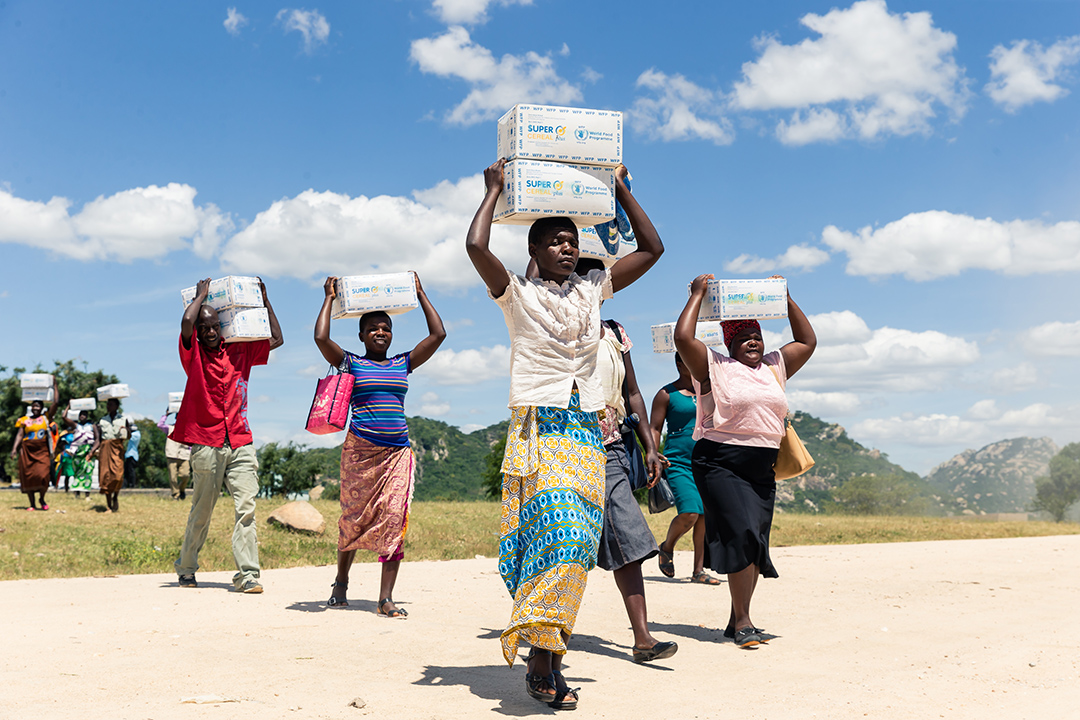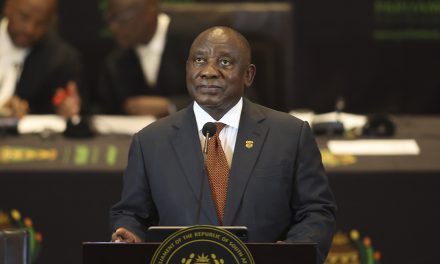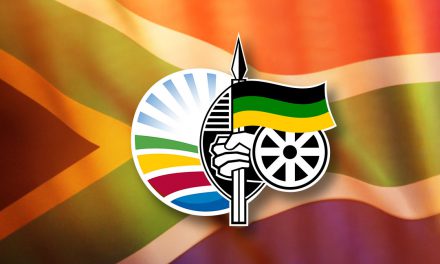By the time this column goes to print, the Monetary Policy Committee (MPC) of the South African Reserve Bank will have decided on whether to again raise the repo rate or not. Pundits expect the US Federal Reserve to hike its rate by 75 basis points this week, and South Africa is expected to follow suit. As the adage goes, the rest of us catch a cold when the US sneezes.
Here’s how it works: The US fed has long threatened interest rate hikes and should indeed have done it sooner to avoid the shock effects of a large hike. Borrowing has been cheap, and Covid-induced money supply injections into the economy to revive it have exacerbated these pre-existing inflationary pressures. Inflation is, theoretically, a function of too much money chasing too few goods.

Women carry boxes of porridge for their children, on March 13, 2019, in the Mutoko rural area of Zimbabwe. Eastern Zimbabwe receives help to fight drought induced hunger, as a total of 32.000 villagers affected by drought in the Mutoko area. They received USD cash donations and children porridge donated by the World Food Programme (WFP) in partnership with USAID. Photo by Jekesai Njikizana/AFP
One way to tame inflation is to make the cost of borrowing (interest rates) higher. In South Africa, it works a little differently. When the US fed hikes interest rates, ‘hot money’ chases higher dollar yields, which in turn drives up the value of the greenback. This is bad news for emerging markets whose debts are priced in US dollars, and which also import oil priced in the same currency.
Partly in expectation of the Fed’s move, the market responded by selling off the Rand, inflicting depreciation to nearly R18 to the dollar, the worst performance of the Rand since May 2020. This makes imports more expensive. And the oil price is likely to stay at just over $100/barrel until the end of the year, given the protracted war in Ukraine, limited supply from Russia, and OPEC’s reluctance to increase production to drive down prices.
In turn, the South African Reserve Bank, which has an inflation-control mandate, increases interest rates at home. This has the dual effect of taming local expenditure (borrowing costs increase leaving less disposable income available) and buoying the value of the rand (provided all the hot money in the system doesn’t flow to established markets, i.e., into the US dollar), which mitigates import-driven inflation to some extent.
As is clear, however, the Reserve Bank’s mandate is challenging. It is trying to manage a phenomenon that is a function of numerous factors beyond its control. And every time it acts by inflicting higher interest rates, it runs the risk of not taming inflation sufficiently and stifling growth at the same time. Economists call this ‘stagflation’ – the increased cost of living in a growth-less economy with load-shedding.
Moreover, even when our economy has grown over the last decade, it has largely been jobless growth. Regarding emerging markets more generally, the World Bank states the following: “The COVID-19 pandemic reversed progress in global poverty reduction for the first time in a generation in 2020. Its lingering effects, combined with rising inflation and the effects of the war in Ukraine, will lead between 75 million and 95 million additional people to live in extreme poverty in 2022 compared to pre-COVID-19 projections.”
As our latest GGA Intelligence Report shows, African countries remain overly susceptible to global shocks. Food insecurity, as just one serious example, appears to have worsened. In many sub-Saharan African countries, food is available but not easily accessible. In other words, production is not necessarily the issue; the challenge is often one of distribution. Covid-19 and the Ukraine war exacerbated pre-existing conditions of poor governance and local conflicts.
While South Africa is technically food secure, on average at a national level, most households lack access to adequate food to meet their dietary needs for an active and healthy lifestyle. According to StatsSA, the number of hungry and food-insecure South Africans is approximately 11% (6.5 million) of the population. Hunger and food insecurity, generally speaking, are primarily driven by conflict and insecurity, climate change, poverty, and population growth. The current population of South Africa is 59,893,885, a 0.84% increase from 2021. This increase in population is an important driver of food demand expansion.
According to a research report by Black Sash, most households, despite social assistance from the government, are unable to meet the nutritional needs of children. For the country, it is likely to become increasingly difficult to achieve food security and meet nutrition goals as outlined by the Millennium Development Goals (MDGs) (2000–2015) and Sustainable Development Goals (SDGs) (2015–2030). More than half a million households with children aged five years or younger experienced hunger in 2017. Northern Cape and KwaZulu-Natal had the highest proportion of households that experienced hunger. According to the report, more than half of households with young children that experienced hunger were in urban areas.
The R350 Social Relief of Distress Grant has become a lifeline for many south Africans who lost their source of income during the covid-19 pandemic restrictions. The grant is not a lot of money but has helped families through difficult situations. New amendments to the grant, however, increase the income threshold, or ‘means test’ to R624 – anyone earning more than that no longer qualifies for relief. The inadequacy of the grant is stark when weighed against the reality of the rising costs of living. According to the latest Household Affordability Index, a monthly household food basket costs R4,776, an increase of 12.6% year on year.
As indicated earlier, the Russia–Ukraine war has exacerbated systemic weaknesses in the current international food system which pose a disproportionate risk to African countries, especially those that have a high dependence on food imports from these two countries. Conflicts disrupt markets and affect development policies established to assist the poor.
The ongoing war, combined with the aftershock of COVID-19, has also created a multifaceted risk to the South African food security level and economic outlook. Through higher energy and food prices and supply chain bottlenecks, the war continues to intensify inflationary pressures, causing the monetary policy to tighten more rapidly. A rise in US interest rates may stifle the inflation-taming efforts of South Africa’s MPC interest rate hikes; if so, the continued rise in inflation will negatively impact discretionary income. This drives down consumer spending and reduces employment levels, driving more people into deeper food insecurity.
While the South African economy has a relatively small direct trade relationship with Russia, as well as with Ukraine, the shock to global trade still negatively impacts exports and imports, which limits the country’s food availability. South Africa’s exports to Russia and Ukraine are less than 1% combined, and imports from both countries are about the same percentage. South Africa’s exports to Russia consist mainly of agricultural products (citrus and other fruits) while imports are dominated by wheat and fertilizer. The citrus industry exports approximately 7 to 10% of total South African production to Russia.
Soaring food and fuel prices impact the most vulnerable disproportionately, resulting in hunger and hardship for households that spend the highest share of their income on food. The obvious policy implication is that the South African government needs to support food security and sustainable food policies through increasing investment in agriculture and encouraging agricultural productivity at all scales (subsistence, smallholder, and commercial). In order to ensure that households can afford food, the government might consider a short-term continuation of the COVID-19 social grants and its unemployment grant.
This solution would typically form part of a Keynesian monetary supply expansion to ‘spend our way out of economic trouble’. However, an unfettered Keynesian approach would be highly irresponsible until other factors causing inflation and impeding growth are under control. Rising energy tariffs, thanks to years of Eskom mismanagement, are but one driver that could be addressed through an appropriate set of measures to rapidly expand the energy mix. Moreover, governance improvements are required across the board to strengthen investment attractiveness. Until then, the government needs to be as prudent as possible.









